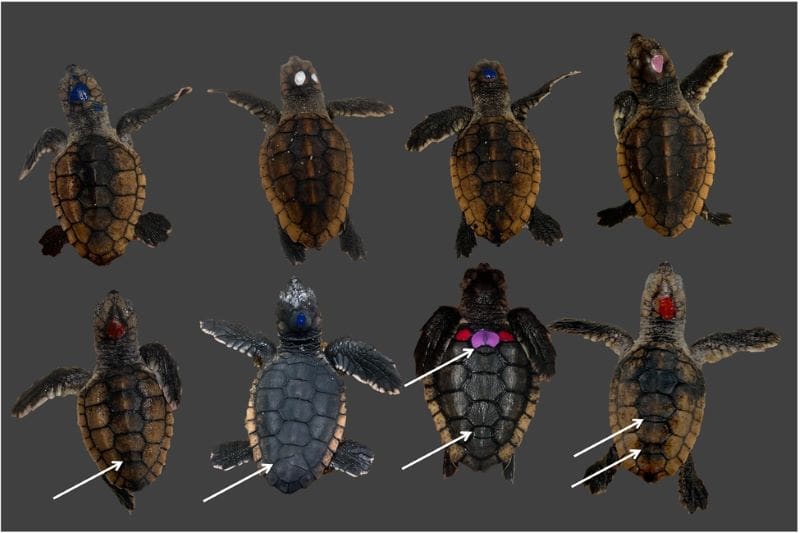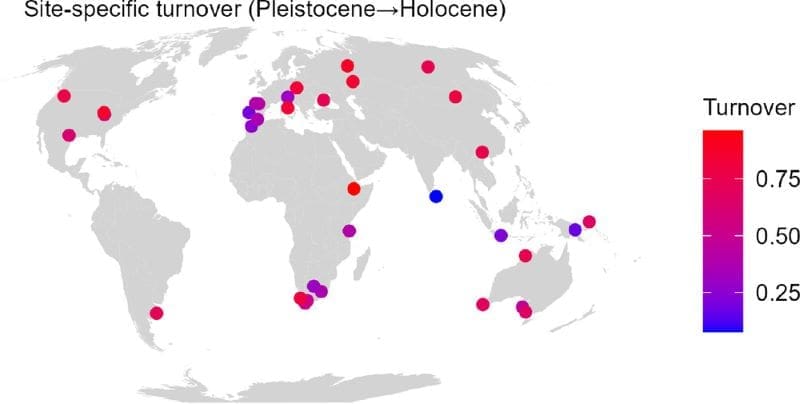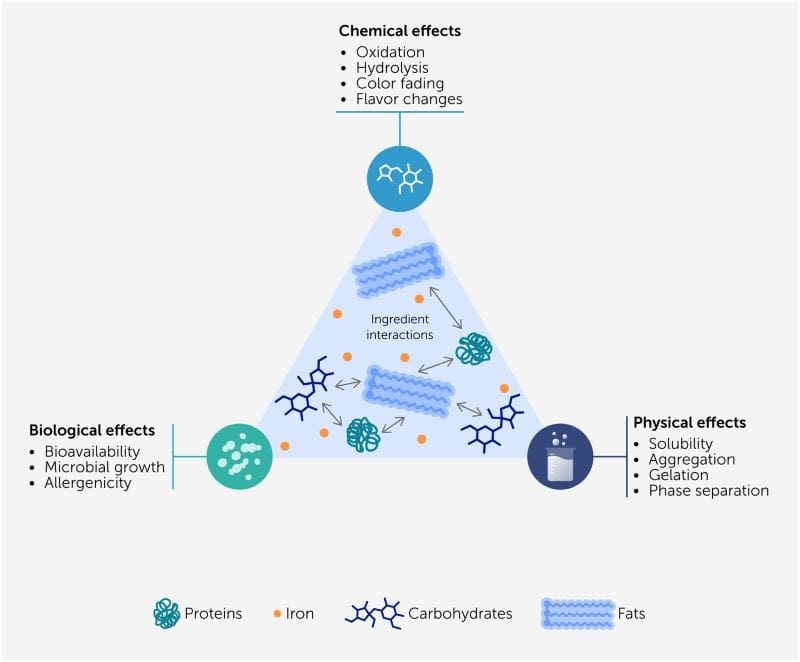Explore the latest insights from top science journals in the Muser Press daily roundup (October 3, 2025), featuring impactful research on climate change challenges.
In brief:
Study first to show if nesting heat affects sea turtle hatchling ‘IQ’
A new study by researchers at Florida Atlantic University’s Charles E. Schmidt College of Science offers a surprising glimmer of hope. They are the first to test whether incubation temperature affects cognitive ability in loggerhead (Caretta caretta) hatchlings – how well they can learn, adapt and problem-solve. While animal cognition has been widely studied in birds and mammals, much is yet to be discovered in reptiles.
Using a Y-maze and a visual discrimination task, the researchers trained hatchlings incubated at two female-producing temperatures (88 °F/31.1 °C and a hotter 91 °F/32.8 °C) and then tested their ability to “reverse train” when the task rules changed. Eggs were collected during the summers of 2019 and 2020 from nesting beaches in Palm Beach County.

In the initial acquisition phase of training, approximately four weeks after the turtles hatched, they were trained to associate a food reward with a specific monochromatic pattern such as stripes or a bullseye, which were positioned at the ends of the maze. In the reversal phase, the reward pattern was switched, requiring the turtles to abandon the original association and learn that they would need to go to a different target for the reward. This reversal task measured behavioral flexibility – the ability to adapt to new information, which may be essential for survival in dynamic environments like the ocean.
Unexpectedly, the study results published in the journal Endangered Species Research found no significant differences in learning ability between the temperature groups. In both years, hatchlings from both temperature treatments were able to successfully complete the acquisition and reversal tasks. In 2020, they even performed significantly better during the reversal phase, learning faster than they had during initial training.
“Not only were the post-hatchlings capable of suppressing previously learned behaviors to form new, more advantageous associations, they were able to do so with remarkable speed – often requiring fewer trials than the initial learning phase,” said Sarah L. Milton, Ph.D., senior author and chair and professor in the FAU Department of Biological Sciences. “This surprising level of behavioral flexibility suggests that these young turtles may be better equipped to navigate and adapt to rapidly changing environmental challenges than we previously understood. Such adaptability could prove crucial for their survival in an increasingly unpredictable world.”
However, findings also revealed that higher incubation temperatures negatively affected several key physical traits. Hatchlings from the 91 °F nests had shorter incubation durations, lower hatching success, slower post-hatch growth, and more frequent scute anomalies – defects in the scales of their shell. They were also smaller – an outcome that could compromise swimming performance and predator evasion.
“The concern remains very real,” said Ivana J. Lezcano, corresponding author and a doctoral candidate in FAU’s Department of Biological Sciences. “Elevated incubation temperatures are known to produce smaller, less physically resilient hatchlings and cause a significant decline in overall hatching success. Together, this can pose serious risks to population survival. However, our finding that cognitive ability and learning may remain largely unaffected, at least in the short-term, by these higher temperatures offers a hopeful perspective.
“It suggests that, despite other developmental and physical challenges, these turtles may retain the mental flexibility needed to adapt to their changing environments. This resilience gives us one of the first glimpses of how incubation temperature may affect behavioral traits, though ongoing research is essential to fully understand the long-term implications.”
The researchers stress that while these results are encouraging, they come with caveats. The study only examined temperatures up to 91 °F, and nesting beaches in South Florida have already recorded sand temperatures exceeding 93 °F/33.9 °C to almost 96 °F/35.6 °C – levels known to severely affect hatching success and hatchling performance. More extreme temperatures could still pose risks to brain development and cognition that weren’t evident at the sublethal range tested here.

Furthermore, while a nest in the field is typically considered “successful” if the majority of the hatchlings emerge from it, the study suggests that survival models may need to go beyond emergence rates and factor in hatchling quality – physical and behavioral alike.
“The hatchlings in our study were able to swiftly adjust to new information despite developmental stressors,” said Milton. “This behavioral adaptability is not just a survival mechanism – it’s a critical evolutionary advantage that may enable them to cope with the complex challenges posed by their shifting habitats. Conservation efforts must prioritize not only the preservation of hatchling populations but also the environmental conditions that support their ongoing cognitive development and resilience.”
As sea turtle embryos are so strongly influenced by the thermal conditions of their nest, understanding how temperature affects not just who survives but how well they are equipped for survival is critical.
***
This research was supported by the FAU School of Environmental, Coastal, and Ocean Sustainability within the Charles E. Schmidt College of Science.
Journal Reference:
Ivana J. Lezcano & Sarah L. Milton, ‘Assessing the effects of incubation temperature on the cognitive ability of post-hatchling loggerhead sea turtles Caretta caretta‘, Endangered Species Research 58: esr01433, 23-41 (2025). DOI: 10.3354/esr01433
Article Source:
Press Release/Material by Gisele Galoustian | Florida Atlantic University (FAU)
New research reveals how farming reshaped the animal world
Fossil bones from six continents have revealed how people have fundamentally transformed mammal communities across the globe, according to new research that traces 50,000 years of animal history.
The international study, published in Biology Letters, shows that during the last Ice Age, mammal communities formed distinct patterns across continents based on natural climate zones and geographic barriers. But after farming began around 10,000 years ago, just a handful of livestock species spread along with humans and scrambled those natural boundaries forever.

“The study shows how agriculture and hunting combined as powerful global forces to reorganise ecosystems, which still creates conservation challenges today,” says Associate Professor John Alroy from Macquarie University, a co-author on the study.
The researchers found just 12 domesticated species – including cattle, sheep, pigs and horses – appeared in roughly half of the global sites studied, fundamentally altering the composition of animal communities.
“We examined species lists from hundreds of archaeological and palaeontological sites across multiple continents, spanning the past 50,000 years,” says lead author Professor Barry Brook from the University of Tasmania.
“All domesticated species had an impact, including donkeys, sheep, goats, pigs and dogs,” Associate Professor Alroy says. “Large ungulates like horses and cows are important because they monopolise food resources wherever they are in high numbers.”
The researchers developed a new computer-clustering method to show that domesticated animals link archaeological sites thousands of kilometres apart, while many wild mammals went extinct following human arrival.
“Over the last 10,000 years or so, humans have overseen the wholesale replacement of native mammal communities with a very limited set of domesticated species,” Associate Professor Alroy says.
“National parks in the hardest-hit regions, such as Australia and the Americas, lack over half of the native large mammal species that would have been present if not for humans.”
Journal Reference:
Brook Barry W., Lyons S. Kathleen, Carter Benjamin E., Gearty William, Todorov Orlin S., Aandahl Zach and Alroy John, ‘Late Pleistocene faunal community patterns disrupted by Holocene human impacts’, Biology Letters 21, 8: 2025.0151 (2025). DOI: 10.1098/rsbl.2025.0151
Article Source:
Press Release/Material by Fran Molloy | Macquarie University
Mix insect, plant, and cultivated proteins for healthier, greener, tastier food, say experts
This is according to a new Frontiers in Science article in which researchers reveal how hybrid foods, which combine proteins from different sources, could be part of the solution.
The researchers say that by using combinations of different proteins from plants, fungi, insects, microbial fermentation, and cultivated meat, we could create tasty, nutritious, and sustainable alternatives to animal products.
As well as tackling environmental concerns, hybrids could also help to address the health and ethical impact of livestock farming such as animal welfare, zoonotic disease, and antimicrobial resistance.
“Hybrid foods could give us delicious taste and texture without breaking the bank or the planet,” said first author Prof David L. Kaplan from Tufts University in the US. “Using protein alternatives needn’t necessarily come with financial, taste, or nutritional costs.”
For example, by drawing on the fibrous texture of mycelium, the sensory and nutritional qualities of cultivated meat, the nutrition and sustainability of insects, the proteins, pigments, enzymes, and flavors from microbial fermentation, and the abundance and low cost of plants, hybrids could combine the best of each protein source, say the authors.
But to make this happen, the researchers call for regulatory review and academic and industry cooperation to overcome hurdles and find the best possible protein combinations for our health, sensory, environmental, and cost needs.
“To succeed, we need research and cooperation across science, industry, and regulators to improve quality, scale production, and earn consumer trust,” added Prof Kaplan.
More than the sum of their parts
The researchers investigated different protein sources: plants (for example, soy products like tofu), insects (processed into flours and blended into foods), mycelium-based products (such as vegan commercial meat analogs), cultivated meat grown in bioreactors, and microbial fermentation products (such as proteins, pigments, enzymes, and flavors).
They assessed the strengths and weaknesses of each protein source and considered how to harness the best qualities of each – both with and without animal meat. For example, while plant proteins are cheap and scalable, they often lack the flavor and texture of meat. Meanwhile, cultivated meat more closely mimics animal meat but is expensive and hard to scale. Mycelium can add natural texture, while insects offer high nutrition with a low environmental footprint.
The researchers reviewed various combinations to compare their sensory and nutritional profiles, consumer acceptance, affordability, and scalability.

They found that while every protein source has drawbacks, combining them can overcome many of these limitations. In the short term, plant–mycelium hybrids appear most economically viable because they are scalable, nutritious, and already used in commercial products. In the longer term, plant–cultivated meat hybrids may become more desirable, as even small amounts of cultivated cells can improve taste, texture, and nutrition once production costs fall and capacity expands.
They also point to early studies which found that substantial fractions of meat in burgers or sausages can be replaced with plant proteins without reducing consumer acceptance, and even small additions of cultivated meat or mycelium can improve the taste, texture, and nutrition of plant-based products.
“No single alternative protein source is perfect, but hybrid products give us the opportunity to overcome those hurdles, creating products that are more than the sum of their parts,” said senior author Prof David Julian McClements from the University of Massachusetts Amherst, US.
Overcoming hurdles
As well as benefits, each protein source presents its own limitations which must be addressed before their resulting hybrids can become mainstream meat alternatives, according to the researchers.
The processing necessary for cultivating meat or combining proteins brings high costs and difficulties with scaling up production. Some protein sources need more consistent, less fragmented regulation, and others, like insect protein, face high consumer skepticism. Many edible insects are highly nutritious and environmentally friendlier to raise than animals, and over two billion people worldwide already regularly eat insects – but consumers in developed countries are often less willing to do so.
Another concern is that many current plant-based meat alternatives require numerous ingredients and extensive processing, and are therefore classified as ultra-processed foods (UPFs), which consumers may view as unhealthy. Observational studies show correlations between high UPF consumption and adverse health outcomes, though causation has not been established. However, the authors note that hybrids – by drawing on the natural benefits of each source – could help reduce our reliance on additives and heavy processing.
The researchers are therefore working to ensure these products are healthy as well as acceptable to consumers. Future research, they say, should focus on optimizing protein sources, developing scalable production methods, conducting environmental and economic analyses, and using AI to identify new hybrid combinations and processing methods.
Journal Reference:
Kaplan DL and McClements DJ, ‘Hybrid alternative protein-based foods: designing a healthier and more sustainable food supply’, Frontiers in Science 3: 1599300 (2025). DOI: 10.3389/fsci.2025.1599300
Article Source:
Press Release/Material by Caroline Brogan | Frontiers
Featured image credit: Gerd Altmann | Pixabay




